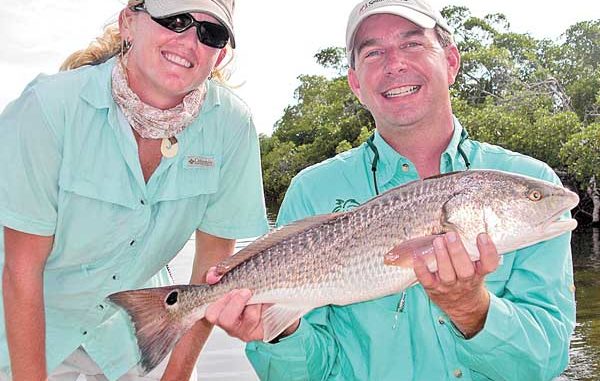
The Atlantic States Marine Fisheries Commission (ASMFC) has completed its 2009 stock assessment for red drum on the east coast, and the conclusion is that the fishery has remained very stable. Robert Boyles, SCDNR’s Deputy Director for the Marine Division, was recently elected as chairman of this ASFMC, which consists of representatives from 15 Atlantic coast states that share a mission of conservation and management of marine fishery resources.
The red drum stock assessment showed that young fish are surviving long enough to move offshore and join the spawning population, a key factor that indicates red drum are not being “overfished.” While little is known about the ocean-dwelling breeding stock, juvenile drum three years old or less are found in inshore waters and produce a good bit of research data.
As recently as the 1990s, the creel limit on red drum was five, but it was dropped to two for management purposes before being bumped back up to three a couple of years ago when some “tinkering’ was done by the General Assembly.
“This stock assessment is good news for red drum enthusiasts, but it does not mean that we need to further relax management of this fishery,” Boyles said.
The stock assessment counted data from every source that SCDNR had at its disposal, including fish-tagging data, trammel-netting surveys and electrofishing surveys.
“The take-home message for South Carolina anglers is that the bag reduction was designed to stop a downward spiral for red drum stocks, and now we appear to be on stable footing for a possible uptick in fish abundance,” Boyles said.
Red drum regulations, including the slot limits, may seem complex to some anglers, but it is custom-tailored to ensure good recruitment from sub-adult fish into breeding stock. The next generation of anglers will never know a time when keeping lots of fish was habitual, and limits will likely stay in place in order to keep the fishery on track and on target.
“The one uncertainty is if there will be growth in exploitation of the southern stocks with the closing of some offshore fisheries,” Boyles said.
Inshore guides don’t report any issues these days with paying customers regarding the keeping of red drum, meaning everyone has pretty much come around to the idea that conservation is going to be the key for the health and longevity of the fishery. Releasing fish is the best way to insure a productive day of fishing the next time an angler returns to the fishing grounds.
With so many questions about other stocks such as cobia, snapper and even shad, it is very comforting to know that red drum are thriving. These hearty gamefish provide sport for anglers virtually 365 days a year and are the cornerstone of fishing ambition for recreational anglers.
So whether an angler is fly-casting to puppy drum on the salt flats or an angler is getting a rod-bending pull from a bull red at the jetties — the news is that these type of experiences should continue and offer increased sport well into the 2010.



Be the first to comment